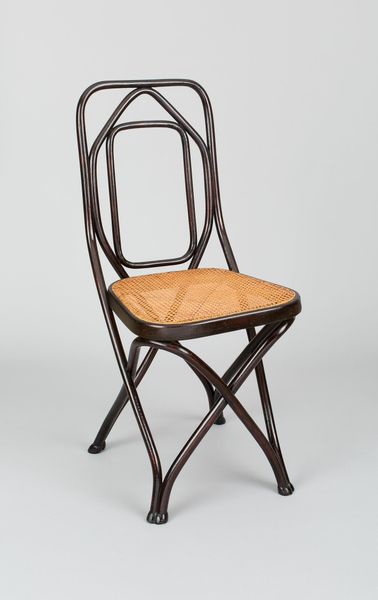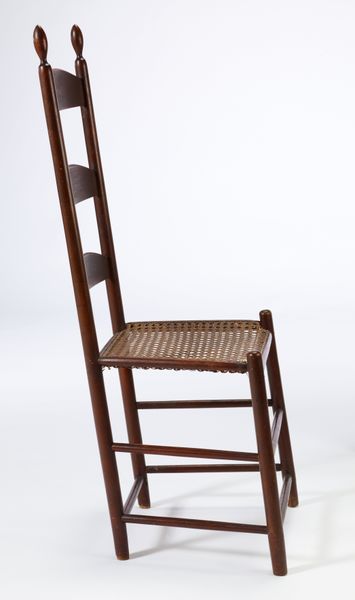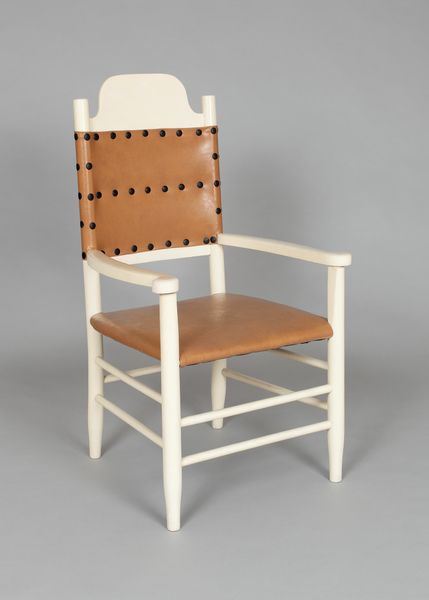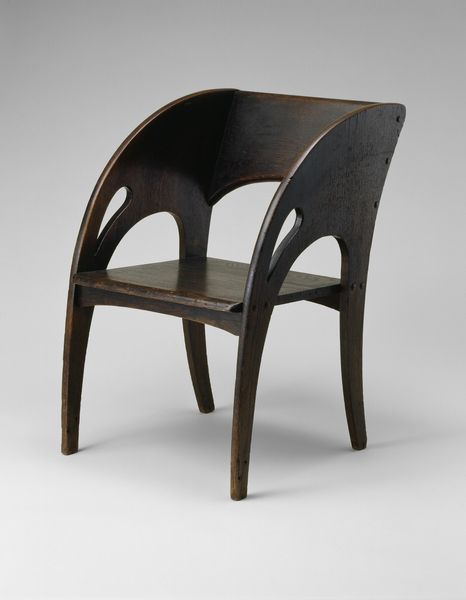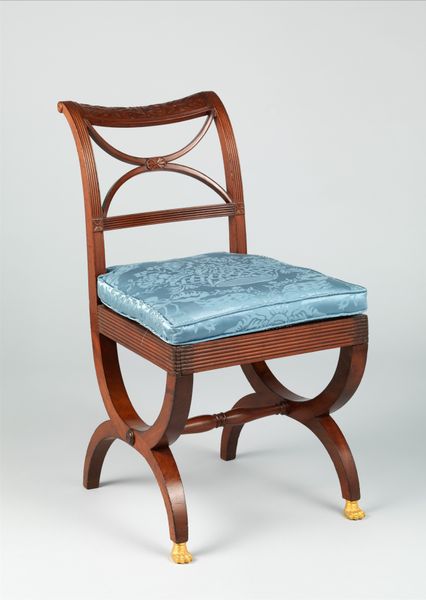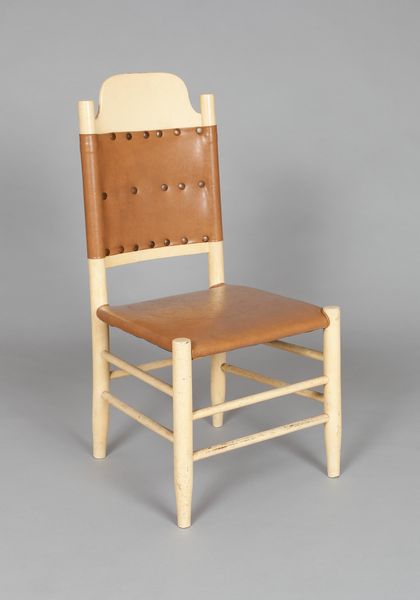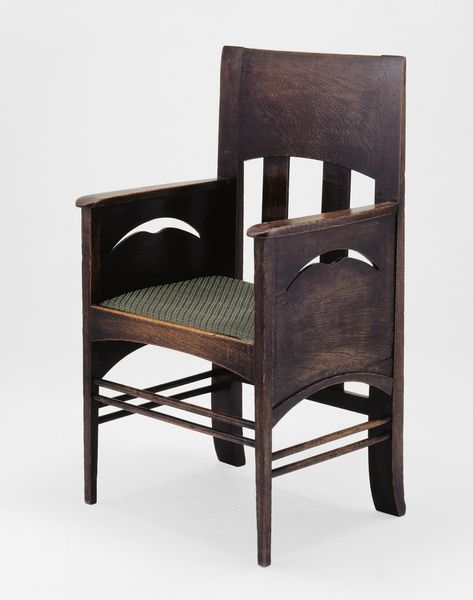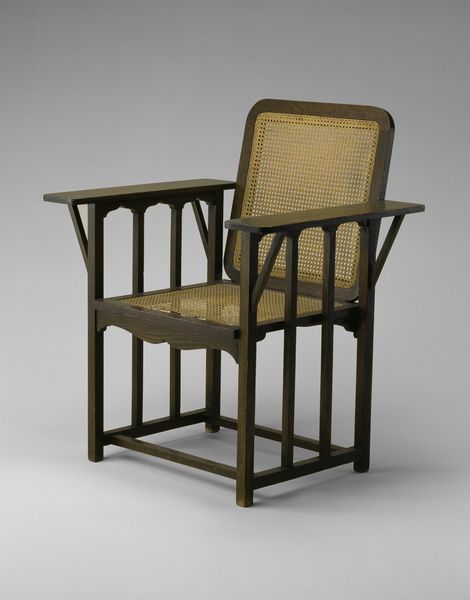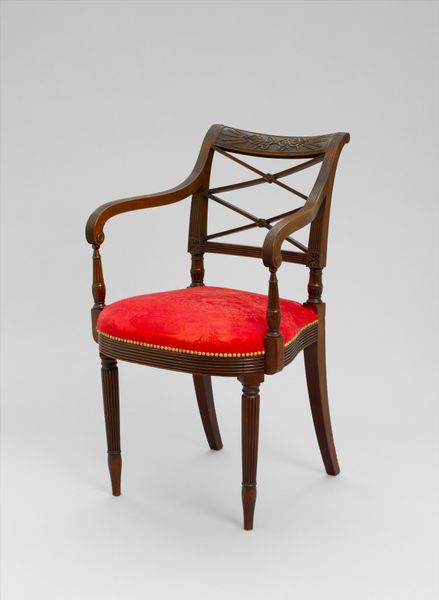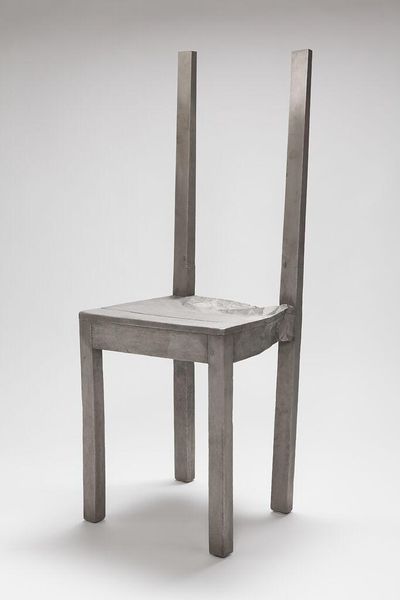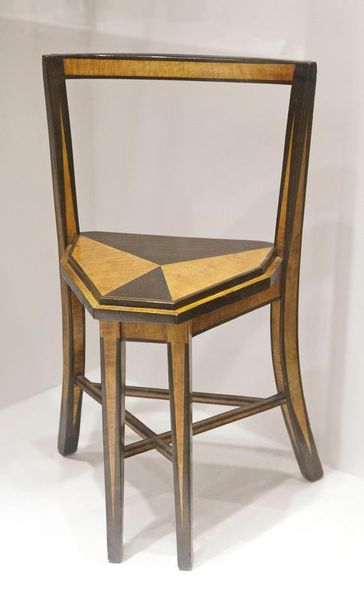
wood
#
arts-&-crafts-movement
#
furniture
#
wood
#
decorative-art
Dimensions: 99.1 × 45.1 × 54.6 cm (39 × 17 3/4 × 21 1/2 in.)
Copyright: Public Domain
Editor: Here we have Peter Behrens's "Chair," crafted around 1902. It is made from wood, currently residing at the Art Institute of Chicago. I am particularly interested in the interplay between the dark wood frame and the woven seat. What material insights does it reveal to you? Curator: It's interesting to consider this "Chair" not just as a piece of furniture, but as a document of early 20th-century manufacturing and class aspirations. Notice how Behrens merges industrial processes with traditional woodworking techniques. Can you see the tension there? It speaks volumes about the Arts and Crafts movement's struggle to reconcile handmade quality with the demands of a rapidly industrializing society. The wood itself – what kind do you think it is, and how was it sourced? These questions lead us to consider the environmental and social cost of its production. Editor: That tension is palpable, especially with the contrasting materials. It almost feels like a rebellion against mass production, yet also an acceptance of it. The dark wood suggests maybe something local? Thinking about the chair's journey from raw material to finished product makes me appreciate the labor involved. It shifts my understanding from aesthetics to production. Curator: Exactly. What appears at first as a simple, decorative piece reveals layers of complexity when we consider its material existence and the labor conditions surrounding its creation. Is this chair intended for the wealthy to feel closer to "honest work," even though it's probably crafted in a workshop using machine-cut wood, not truly "hand-made?" Considering all this makes one wonder about consumption then and now. Editor: I hadn't considered the possible performative aspect of owning this style of chair! That changes my whole perception of the Arts and Crafts movement's intention. It is as much about social performance, and aspirations, as aesthetics. Curator: Precisely. That's what a materialist perspective brings - it goes beyond surface beauty to reveal the complex realities of production, consumption, and social relations.
Comments
No comments
Be the first to comment and join the conversation on the ultimate creative platform.
